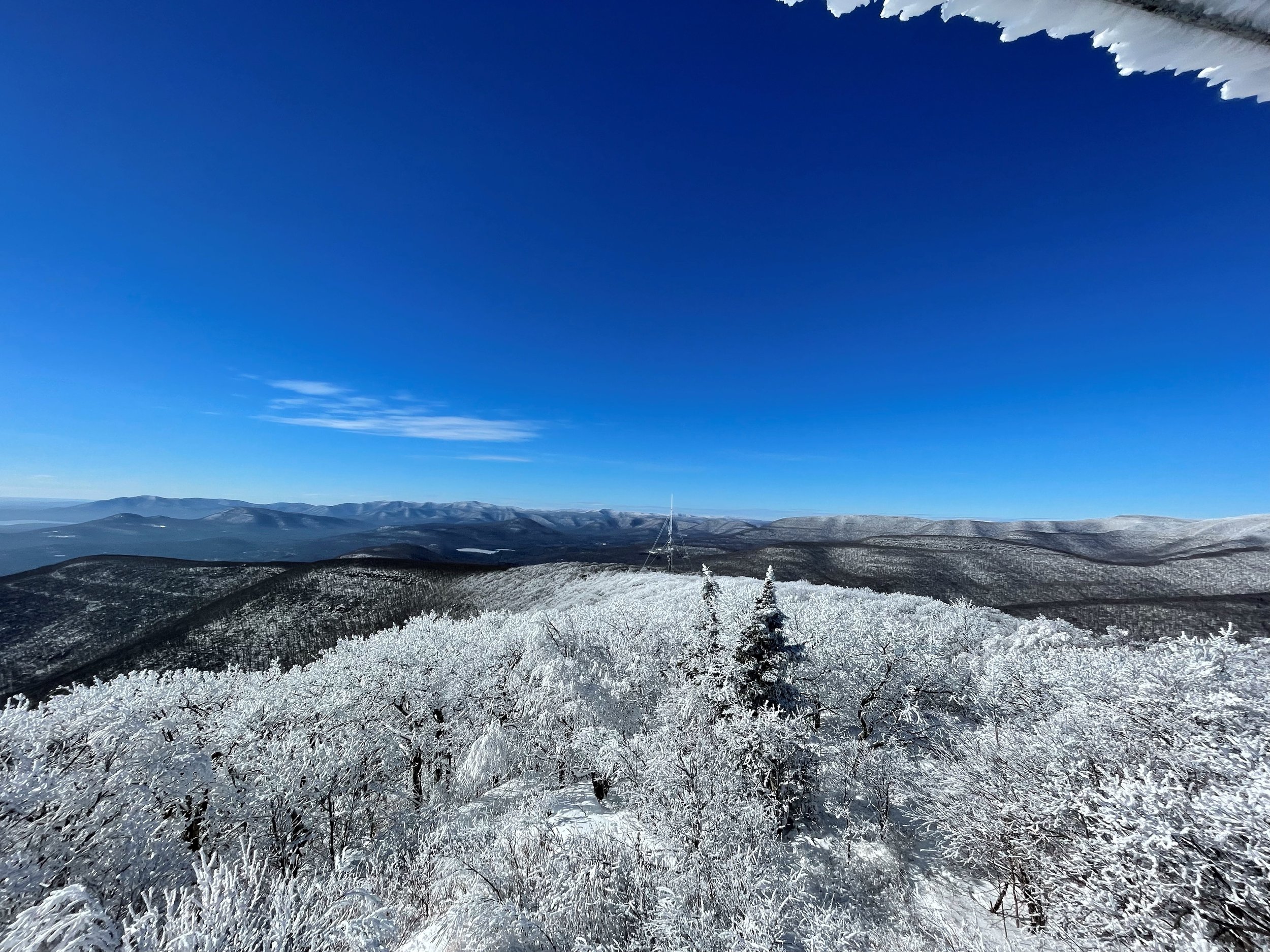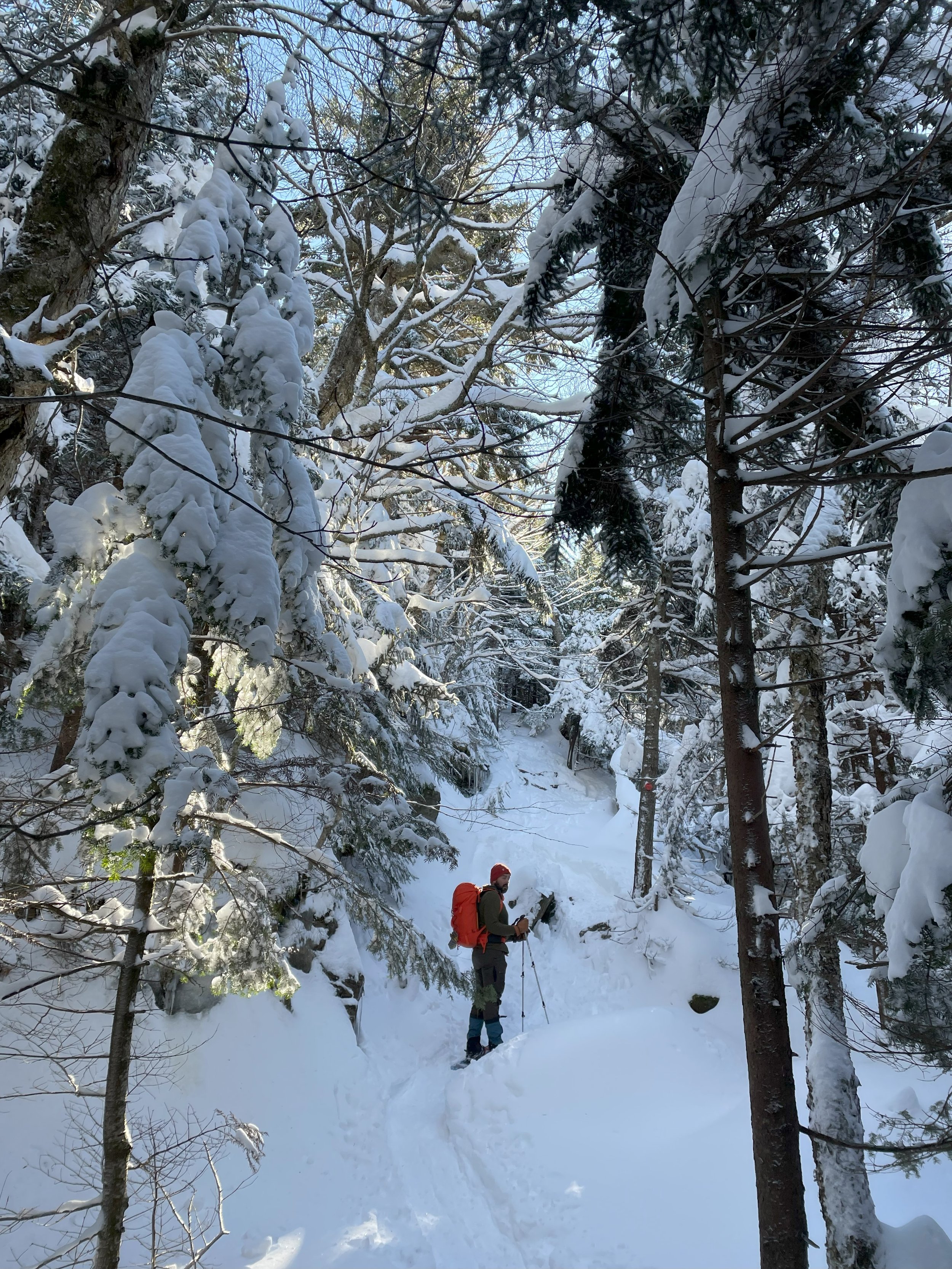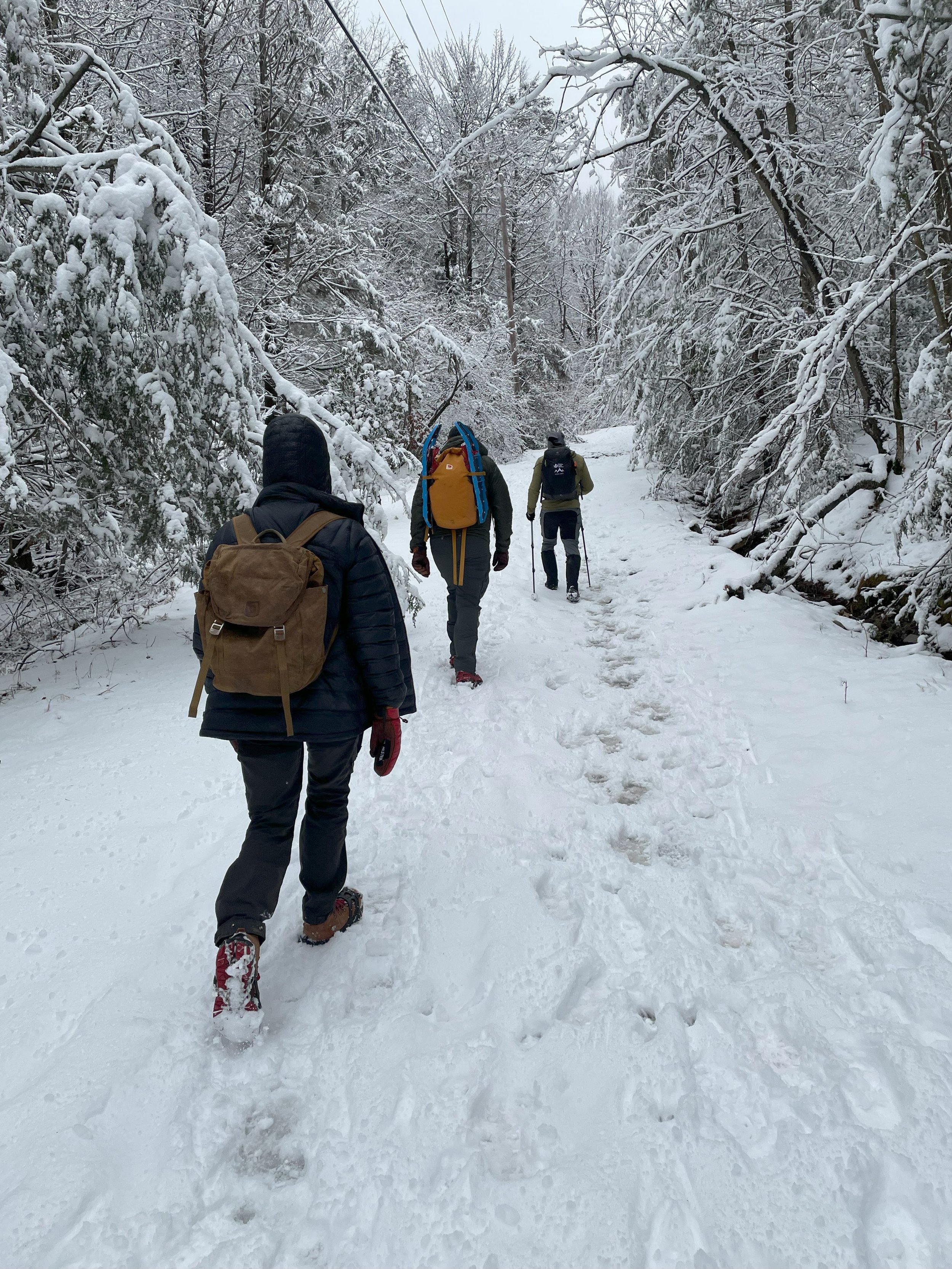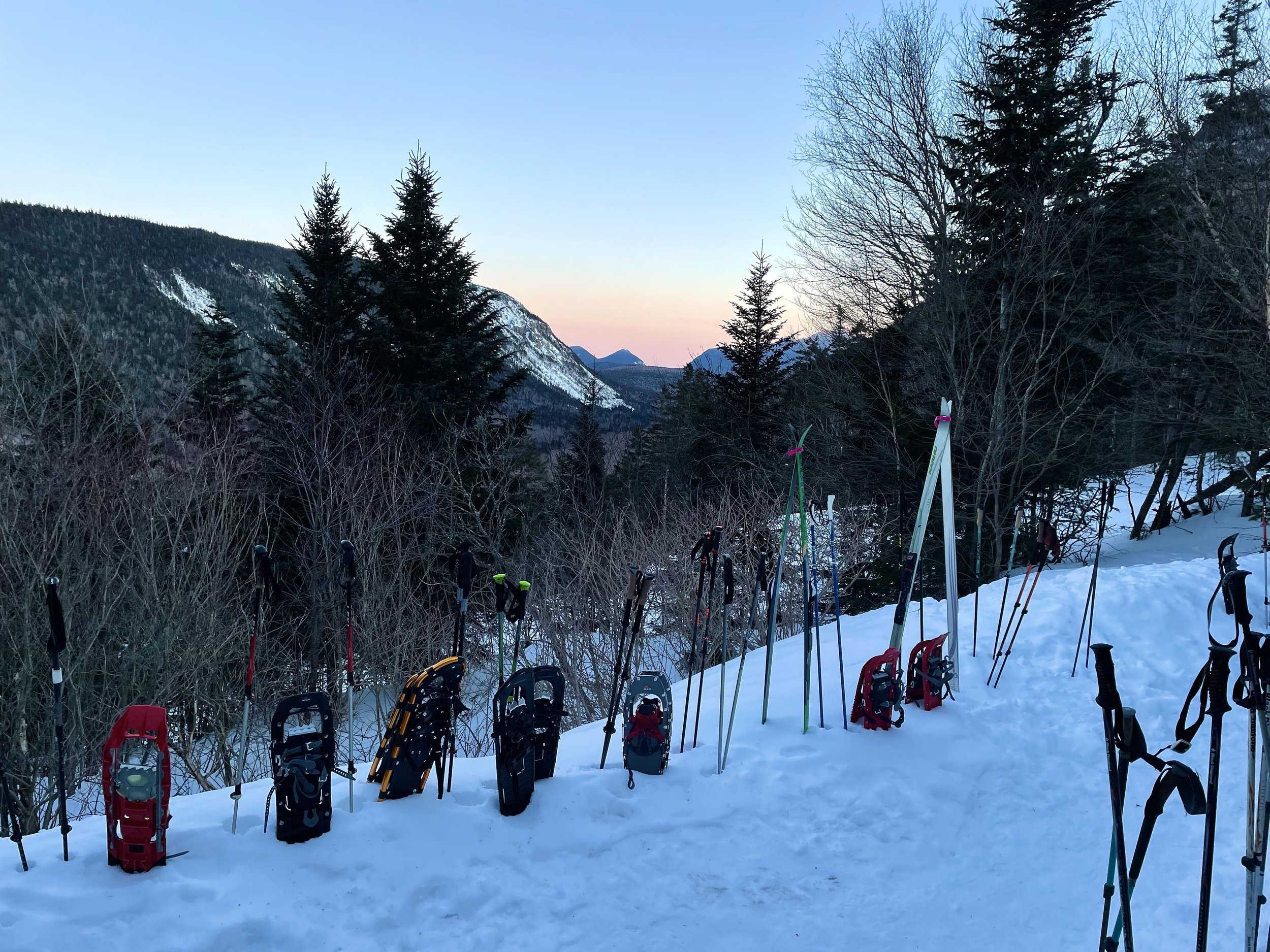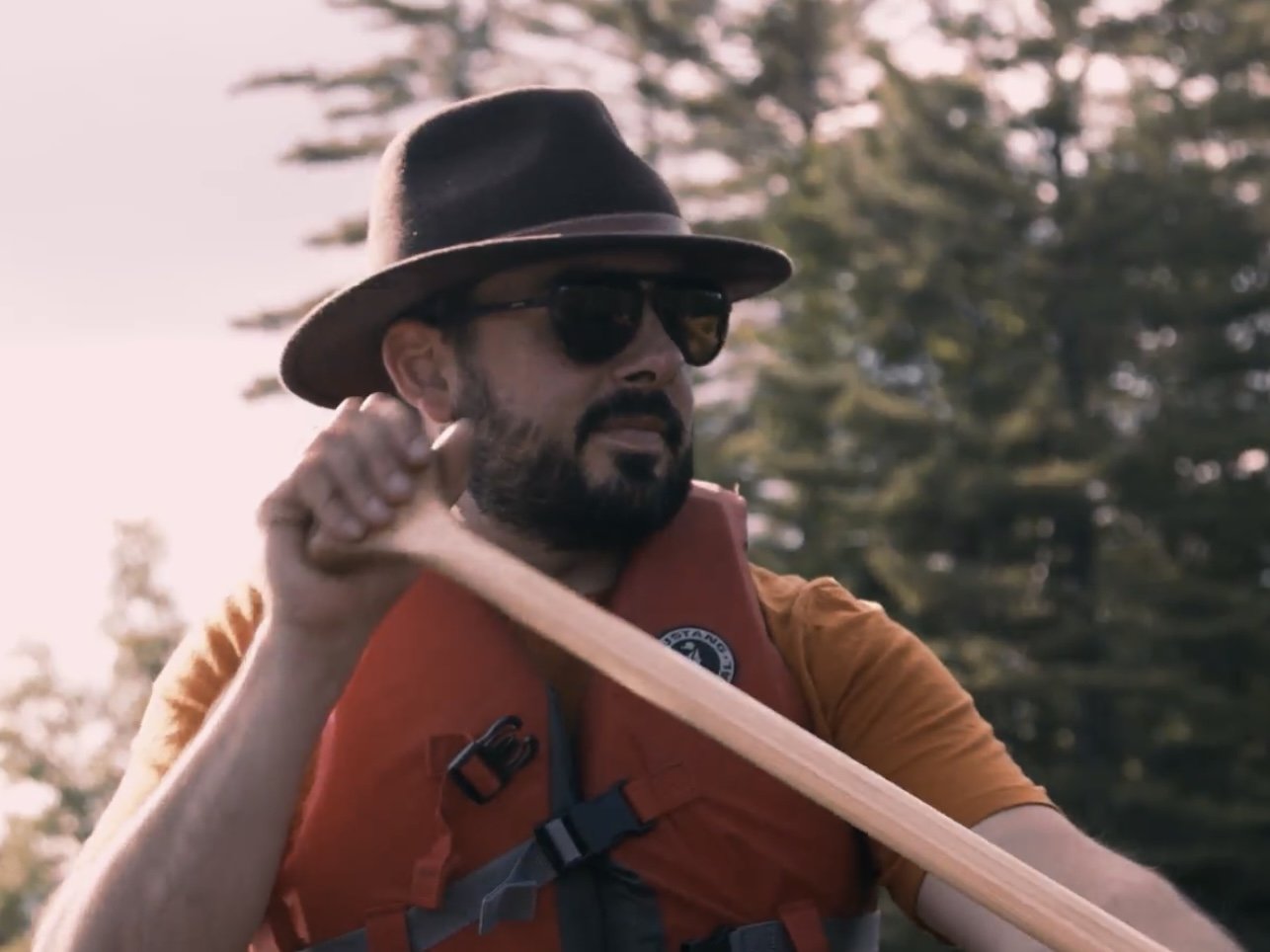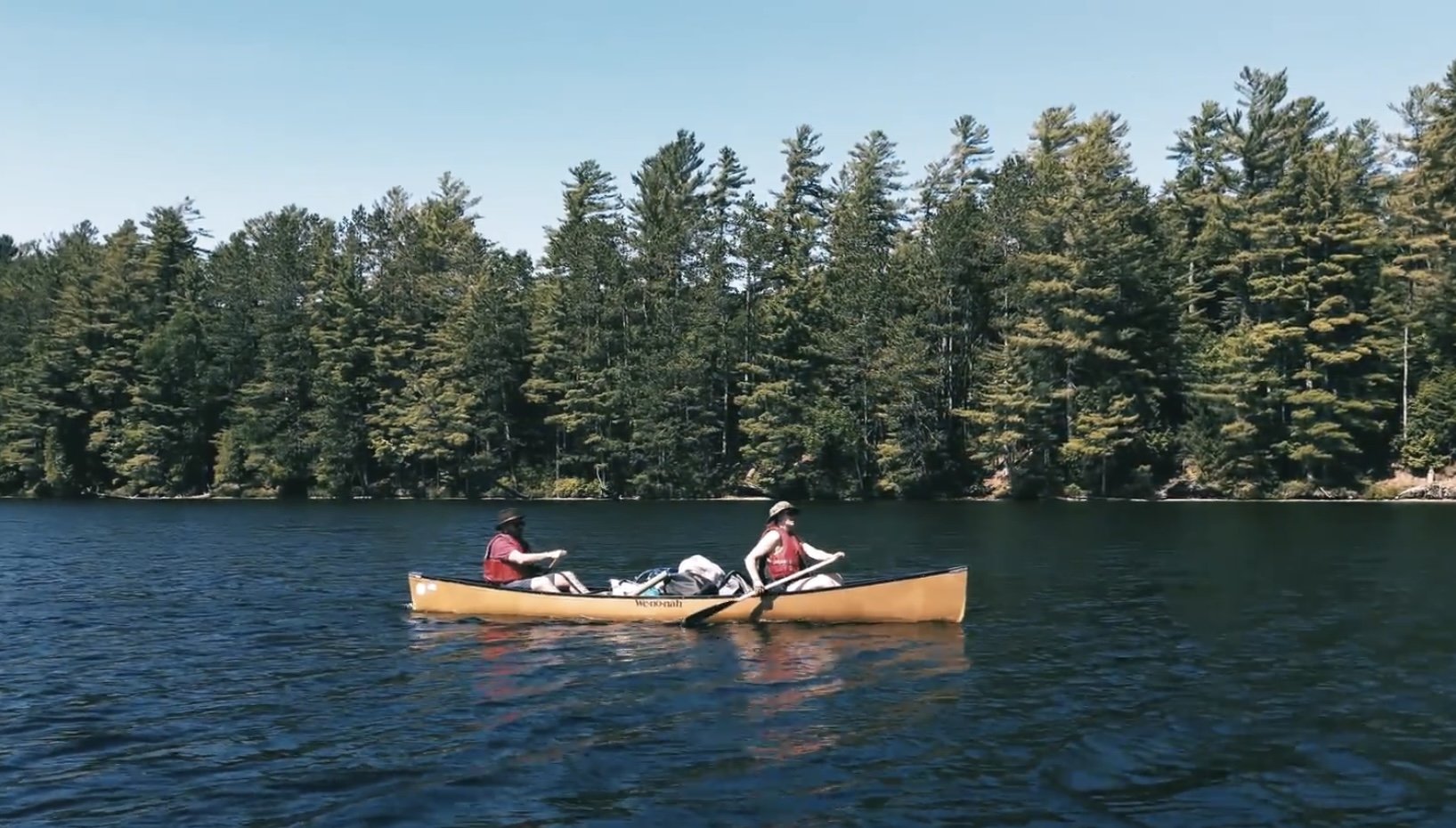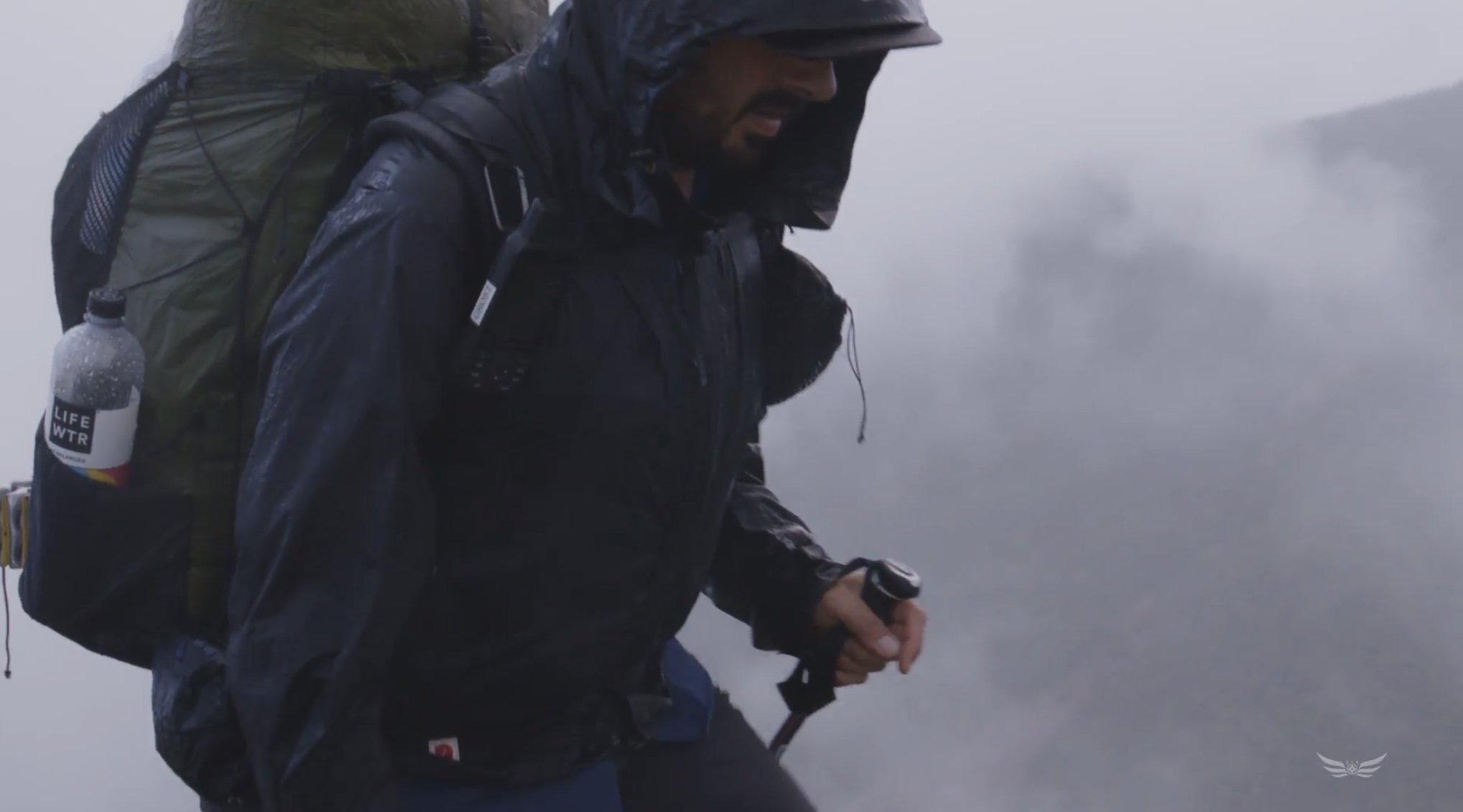Layering for Winter Adventures
For many hikers, the last autumn leaves falling to the ground and the first days of frigid weather signal that it’s time to hang up the backpack and hunker down.
While hiking in the winter months may seem intimidating to beginners, many great hiking trails near you can provide amazing winter adventures — and with the right outdoor gear, you don’t have to let the cold stop you from getting out into nature.
When it comes to winter hiking, there are plenty of reasons to take your love of the outdoors from a fair-weather endeavor to a four-season adventure — it’s less crowded, you don’t have to deal with bugs, and you can enjoy spectacular views that are usually blocked by the foliage… and let’s not forget the chance to take in the sights of stunning, snow-blanketed vistas.
From the basic layers you’ll need to traction, flotation, and sun protection, by the end of this article, you’ll know what you need to enjoy a winter wonderland.
How to Prepare for Your Winter Adventure
One of the most important things to consider when preparing for winter hiking is which hiking clothes you’ll need to keep you warm and dry on your adventures. The key to dressing for the outdoors at any time of year is to use a layering system — especially during winter.
Henri de la Vega, our Another Summit Deputy Program Director, has provided the knowledge you need to make your winter adventure a success.
The Base Layer: Your Second Skin on Outdoor Adventures
A base layer is what you wear next to your skin. In the winter, this would typically be a synthetic material or wool.
From wool long johns to synthetic shirts and hats & gloves, your base layer is designed to keep you warm and wick sweat away from your skin.
(Cotton absorbs sweat instead of wicking it, so it’s not a good base layer next to your skin.)
The Mid Layer: Essential Insulation for Hikers
The mid layer refers both to regular hiking clothing and insulation layers. If you want to stay comfy and dry, it’s essential to go with quick-drying synthetic fabrics or something like merino wool when choosing your hiking clothes.
Carry light insulation (like a fleece pullover) and warmer insulation (like a puffy down or synthetic jacket) with you. When you’re hiking, you’ll typically want to hike in your first two layers (base layer and hiking clothes) and save your insulation layers for breaks — they’ll make you too hot while you’re moving, so keep them for putting on during a break to trap all of your body heat so you don't get cold while standing around.
The Shell Layer: Stay Protected in Rain and Snow
The shell layer is a waterproof outer layer that protects you from the wind and external moisture like rain or snow. A good shell layer can also be instrumental in retaining your body heat.
We recommend choosing a shell layer made from a breathable material with ventilation zippers so you can remain protected from the elements while allowing your body to let heat out (and avoid sweating!).
Additional Outdoor Gear for Winter
Now that we have our layering system covered, it’s time to look at some other essentials for winter hiking to stay warm, safe, and comfortable.
Footwear
When you’re suiting up for your winter adventure, switch from lightweight trail running or hiking shoes to a sturdy pair of breathable waterproof boots.
Experienced hikers usually have a pair of dedicated boots for the winter hiking season that are a bit bigger than their normal size because they often wear thicker wool socks and need to be sure that the boots can accommodate the extra insulation
If you stuff an oversized, fluffy socked foot into a boot that doesn’t have room for it, you could end up with chilly toes instead of warmth and protection. Why?
When your insulation layers are compressed, they are less effective
Your feet will be constricted, which reduces the circulation of warm blood to your toes
Pro tip: Your feet will swell throughout the day, so when you head out to buy some hiking boots, always choose your gear in person and shop at the end of the day or after a long walk for the most accurate sizing.
Traction and Flotation
If you’re hiking in frosty conditions and you don’t want to risk slipping on the ice or sinking into the snow, you’ll want winter gear that will keep you stable while you’re on the trail.
Heading into winter, it’s a smart move to pick up some microspikes, crampons, or snowshoes, depending on the conditions you’re up against. These nifty gadgets can save you from a nasty fall on the ice or keep you from sinking knee-deep into the snow.
Here’s a quick rundown on essential winter hiking gear:
Microspikes are lightweight traction devices that slip over your hiking boots or shoes. They’re equipped with small metal teeth and are ideal for icy paths, packed snow, and frozen trails.
Pro tip: Toss a pair of these in your go-to pack starting in November, just in case the terrain gets tricky earlier than expected.
Crampons are more aggressive traction devices that are designed for serious mountaineering, ice climbing, and navigating steep icy surfaces. They come with larger, sharper spikes and require careful fitting to your boots.
Snowshoes are designed to provide floatation on deep snow, preventing the wearer from sinking (postholing) with each step. If you’re planning on trekking through areas with snow deeper than 8 inches, use snowshoes so that you can keep the trail safe for yourself and any hikers that follow.
To make sure you’re gearing up appropriately, it’s always a good idea to check the local trail conditions. A quick call to local outfitters or a peek at local outdoor Facebook groups can give you the information you need to make sure you’re not caught off guard.
Hiking Gaiters
Hiking gaiters are protective coverings that wrap around your lower legs and cover the gap between your boots and pants to keep things like rocks, snow, and water from getting inside of your boots.
While you can get by without hiking gaiters in some places, this great winter hiking gear is highly recommended if you’re traveling on snow because it keeps your feet dry and can help keep in body heat that would otherwise escape from the tops of your boots.
Sun Protection
Many inexperienced hikers think that just because it’s winter, they don’t need protection from the sun, but this couldn’t be further from the truth.
Just like spending time on water, when you’re hiking on snow, you’re getting a double dose of UV rays, and the sun shines down on you and is reflected up towards you from the surface of the snow.
To keep yourself as protected as possible, wear polarized sunglasses and extra sunscreen.
A Final Pro Tip: Don't Sweat It
Seriously, try to avoid sweating. The goal when layering up is to keep yourself cozy without overheating and breaking into a sweat.
Why? When you stop moving, any sweat you’ve worked up will rapidly cool your body, which can be problematic in winter weather.
So it’s all about being smart with your layers — take one off before you start to overheat, and add a layer to keep your warmth as soon as you take a break.
Join an Another Summit Adventure
Another Summit is an outdoor adventure program run by non-profit organization Guardian Revival, created to support and enhance the well-being and mental health of our guardians (veterans and first responders) at no cost to them.
Participants in Another Summit have the opportunity to experience the healing power of nature. Our adventures include everything from tranquil nature walks to more challenging activities like canoeing and backpacking, showcasing some of the most stunning landscapes in the Empire State and across the Northeast.


